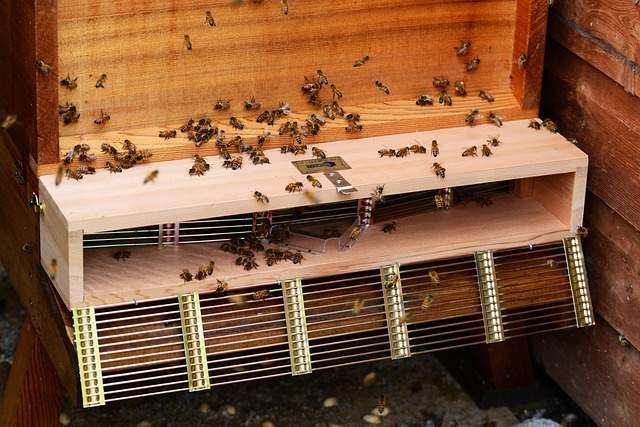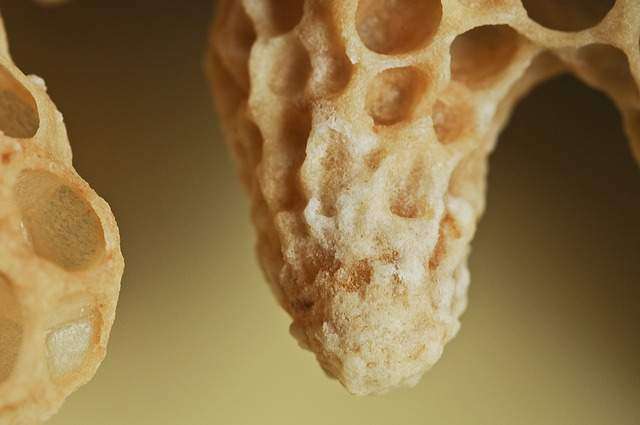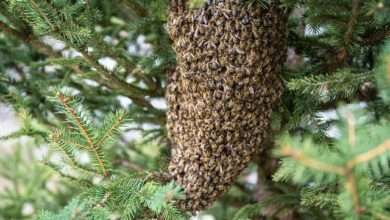What Are Queen Cups?

Have you ever opened your hive and discovered a plethora of items that you do not recall learning about in beekeeping class?
You are not alone, and we are delighted to assist, so read on.
Are they cells of the queen?
Are they in a swarm?
Have I got a queen still?
Why was my elderly queen acting strangely?
If you have any of the aforementioned questions, it is acceptable since you are not alone, and as you learn more about your hives, you are sure to have more questions.
During the spring and summer, queen cups are very common, and honey bees are constantly building inside their hives.
Depending on your circumstances, this may or may not be a good thing since it does not imply that a queen is being made.
Why Do Bees Make Queen Cells?
From day to day and also during the entire year, honey bees are able to take care of themselves. It does not always happen, but honey bees are actually capable of maintaining their colony indefinitely.

Honey bees frequently produce their own queen, and they do it for just three reasons. These reasons are:
- The colony is now queenless.
- When the previous queen is injured or otherwise unable to lay eggs at a high level and maintain their role.
- When the colony is to be divided into multiple different colonies, a new queen will be made for the new colonies.
Do not worry if you find queen cups in your hive. You are likely to find them throughout your hives, especially during spring and summer.
A queen cup serves as insurance for honeybees in case they need to rear a new queen in the future.
Building a queen cup is comparable to building the foundation for a future mansion that may or may not be constructed.
Bees can move a fresh egg into a queen cup and add a new comb to it to transform it into a queen cell if they need a queen cup.
What is the Difference Between a Queen Cup and a Queen Cell?
A. Queen Cup
A queen cup is a tiny little cup that is frequently on the bottom of the frame made from the comb and right on the comb. The bottom of the cup is where its opening is always located.
They might resemble the open-topped red Chinese lanterns in shape. Bees frequently produce a large number of them in case they become necessary.
The mere presence of queen cups does not necessarily indicate that a new queen is being produced.
B. Queen Cell
A queen cell is a queen cup that has grown and seems to be significantly longer. They are substantially more noticeable than a queen cup and resemble a gonzo nose or peanut more.
They are frequently hidden by the nurse bees caring for the developing queen inside, making them sometimes difficult to view.
When do bees build queen cups?
Queen cups are rarely used despite the bees building more than 15 cups in a single hive. It is typical to find several queen cells throughout the spring and summer, according to research into numerous hives over the course of the year.
Because both the queen cups and cells are made of beeswax, which bees cannot produce throughout the fall and winter, you are more likely to find both during the spring and summer seasons. There is, however, an exception in tropical and subtropical regions.
Because of the time of year and the anticipated need for more queens due to swarming, queen cups are constructed most frequently in the spring.

It is unlikely for bees to build queen cups during the fall, and neither are they built during the winter.
Since the swarming season is always around spring, they will not build queen cups. Besides, queen cups are only made when the bees need to raise a new queen, and the swarming season is around spring and swarm season is also a queen cup season.
The Stages of Queen Cells
Queen cups are used to create queen cells. Queen cells have four developmental phases.
It is impossible to contain the queen cell without a queen cup.
- Therefore, the first stage is the presence of queen cups.
- An open cell is the second stage. Larvae are being deposited in the queen cup just here. It is two to four days old.
- The capped queen cell is the third stage. When you see this, it means that the queen inside the cell can emerge at any given time.
- The last and the fourth stage is the emerged queen cell. The only difference between it and the capped queen cell is that the top has been chewed by a virgin queen.
Should I Remove the Queen Cups?
Removing the queen cups is not necessary because even if you remove them, you will not find anything in them.
We have found over the years that it is challenging to control a colony that wants to reproduce.
What they are most concerned about, after all, is reproduction. Moreover, the colony will make more if necessary if you do remove the queen cups.
Because a queen cell is not yet a queen cell, the bees have not used much or any energy on raising a new queen, which does not need a lot of resources.
However, it might be a different story if you have a queen cell instead of a queen cup. It is usually best to leave it alone and let nature take its natural path, even when you find a queen cell.
Of course, there are exceptions, but in general, bees are skilled at what they do. If you want to find out more about what to do if you find queen cells, you should read further down.
What Do I Do If I Find Queen Cups?
If you discover queen cups in your hive, there is no reason to be alarmed. When you observe queen cups in the spring or summer, you should tilt the frame upward and look up into the cup. You will need a keen eye to notice an egg, but that is what you are searching for.
When you peek inside the cup, there is nothing to see or do.
If you notice an egg or larvae inside the cup, it implies the bees are creating a new queen. That queen cup will develop into a queen cell and expand considerably within a week.
The queen hatches out approximately 16 days after the eggs are placed. If you do notice indications that the bees are creating a new queen, it may also indicate that the hive is about to swarm or that the bees are replacing the current queen. Smashing the queen cell may not be fully effective because they will make more.
What Do I Do If I Find Queen Cells?
Queen cells are far more important than queen cups and should not be taken lightly. When bees produce queen cells, it is a significant event for the colony and denotes a time when their survival is at great risk.
When you observe the bee colony producing a new queen, pause for a moment and search for indications of the old queen.
If you find the previous queen and she’s healthy and laying lots of eggs, it seems that they are a victim of their own success. When a colony is operating extremely well in the spring, your queen cells are likely the reason it multiplies into many hives.

A new colony will be established somewhere else by your old queen, who will go with about half of the bees.
Your queen cell will emerge and assume control of the colony in place of the outgoing queen.
Observing more than ten queen cells toward the bottom of the picture, dispersed across several frames, is a hint that this is taking place.
They are likely just replacing the previous queen with a new one and not swarming if you only see one or two queen cells and you do not see as much proof of the previous queen.
This is a good thing because it demonstrates that the former queen was unable to carry out her duties and is now being replaced.
Therefore, while the bees sort it out, you should close the hive and refrain from opening it for up to two or three weeks.




